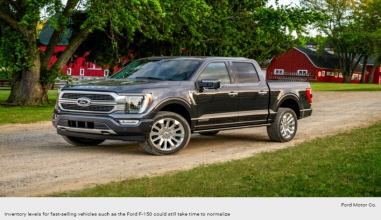Feature
Demand for automotive parts to see decline
Demand for automotive parts to see decline

Total motor vehicle assemblies in the U.S. declined by 8 percent in 2017. This broke a string of seven consecutive years of annual increases in the number of total assemblies. The number of vehicles assembled in 2017 was 11.2 million units. In 2016, the total was 12.2 million units.
The forecast for 2018 calls for another decline of 4 percent in the number of motor vehicles (cars and trucks) assembled in the U.S. This will put the annual total at 10.8 million units.
The decline in assemblies will be the result of a drop in new vehicle sales, both domestically produced and imported. After seven straight years of gains in new vehicle sales, manufacturers reported a decline of about 1.8 percent in 2017, to 17.2 million cars and light trucks. This follows sales of 17.6 million units in 2016. The forecast calls for a drop of 4 percent in sales for 2018, to a total of 16.5 million units.
The seven-year stretch of growth for the auto industry from 2010 to 2016 was the longest in nearly a century. It started at the tail end of one of the industry's (and our national economy's) deepest recessions. You will recall that the Great Recession was so difficult for the U.S. auto sector that it resulted in federally backed bankruptcy reorganizations of both General Motors Co. and Fiat Chrysler. At the low point in 2009, new-car sales plunged to fewer than 11 million a year and motor vehicle assembles dropped to 5.7 million units.
Coming out of the recession, the auto sector was one of the fastest-growing segments of the whole economy. The release of pent-up demand, combined with historically low interest rates, fueled a full-sized recovery in the industry.
But the positive factors that pushed the uptrend since the end of the Great Recession peaked in 2016. Interest rates are now rising steadily, and pent up consumer demand has largely been sated. After seven straight years of sales gains that were substantially more robust on average than the growth in the overall economy, it was only a matter of time until the auto market became saturated. The latest data show there are now 1.26 vehicles on the road for every licensed driver, the highest ratio ever.
This does not mean that the industry is headed for another severe downturn. It just means that market demand will decelerate for the next couple of years. Overall economic conditions are expected to remain healthy in the U.S. for the foreseeable future. Wages are rising and so are the employment levels. This will keep a floor under the light vehicle market for at least the next couple of years.
Another factor that will affect demand for new cars in the next few years is their improved durability. Customer-satisfaction surveys indicate that the quality of motor vehicles has improved, so many Americans are keeping their cars longer. Thus, the same high-quality standards that manufacturers used to entice customers to purchase a new car in the near-term will now have the longer-term effect of keeping them out of the showroom for greater periods of time.
There are some other factors on the horizon that could also create downward pressure on sales. The supply of cars and parts made in Mexico and Canada could be affected if the Trump administration pushes through major changes to the NAFTA. Manufacturers are also moving forward with self-driving and electric vehicles, though it is unclear how or when the market will accept them. My best guesstimate of how much longer it will take to generate large market demand for these types of vehicles is greater than two years but less than 10.
Rising — or dare I say maybe even declining — fuel prices will also be a factor in future direction of market demand for new types of autos. Though they are currently low by historical standards when adjusted for inflation, prices at the pump are rising as 2018 gets underway. Since gas prices are relatively low historically, it lends some credence to recent proposals to raise the gas tax for the first time since 1993 to offset some of the costs of a desperately needed but politically difficult infrastructure bill.
Summing it up for the plastics processors that supply the motor vehicle industry, overall market demand for your products this year will not be as strong as it had been in the past few years. But despite the current phase of consolidation in the data, domestic auto sales remain at a strong level from a historical perspective. And for those of you with exposure to manufacturing facilities and markets outside the U.S., you can take heart in the fact that global motor vehicle sales are still rising. The research firm IHS Markit estimated that global light vehicle sales rose 1.5 percent in 2017, to 93.5 million cars and trucks.
I have one other thought about demand for plastics parts this year, though I am not sure if or how it will affect the market. Evidence suggests that due to quality improvements, owners are keeping their cars and trucks on the road longer. And as mentioned above, the ratio of vehicles to licensed drivers is at an all-time high. Therefore, it occurs to me that both of these trends may put upward pressure on demand for aftermarket parts.



















